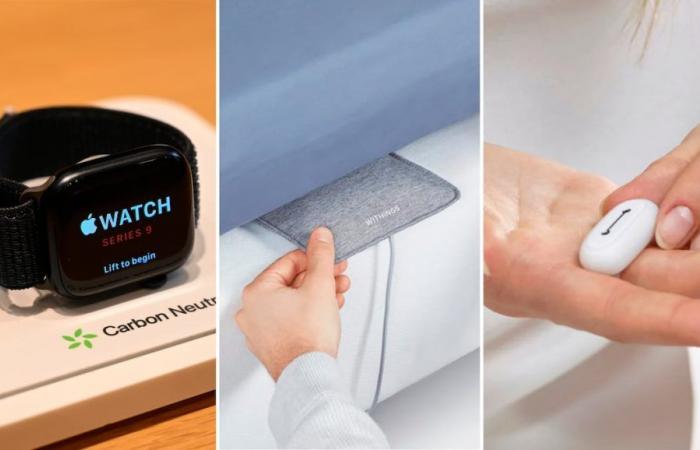
Keeping track of my sleep and finding a way to rest better has always been important to me, but even more so since I became a mother and there comes a time when I lose count of how many times I get up at night to attend to someone. of my two children. That’s why I’m so interested in devices that track sleep quality and that, with all the data, offer advice on how to make it more restful or help me get up in the morning at the perfect time. What options are there? What are the pros and cons of each?
On the wrist
The device that I have been using the longest to control my nights is the smartwatch: It has been on my wrist day and night for years. I am currently using an Apple Watch Series 9, which I charge every morning when I wake up as we get ready to leave the house — it is essential to do this every day — and which helps me monitor my activity, stay on top of notifications on my phone during the day and, of course, track my sleep at night.
In this sense, it takes into account night movement to determine what time I fell asleep, how much time I have spent in each stage of sleep (rapid eye movement phase, light and deep sleep) and, also, how many times I have woken up and in What a moment. What I like most is that I can access a graph from the watch itself with all this data, review the trend in the last 14 days and configure sleep schedules that help meet rest goals. Plus, it wakes me up with a vibration that doesn’t bother anyone, and I can snooze the alarm for 10 minutes if I need to lie down a little longer.
If you want more detailed information, it is available in the Health app from your iPhone. In my case, I have it configured as widget to access directly from a summary page on my mobile’s home screen. In that app, in addition to the data already mentioned, there is also information related to respiratory rate and heart rate while you sleep, as well as information about the phases of sleep, the importance of sleeping well and some apps additional recommended to improve sleep tracking.
under the mattress
Another device I’ve been using over the past few weeks to monitor my sleep is the Withings Sleep Analyzer. It’s a sensor that sits under your mattress, at chest height and is always plugged into the power supply. It detects when you go to bed and wake up, the phases of your sleep, and even if you go into apnea. It’s very easy to install and you just have to keep in mind that you have to let it calibrate for a while once it’s installed under the mattress, so that it can accurately detect when you’re there.
It is very important not to unplug it and plug it in continuously, because it will have to be recalibrated. From there you don’t have to worry about anything and it is very comfortable because you don’t have to carry anything on your body.
All data is organized in the app Withings, the same one used by all the devices of this firm and that integrates with other —like Apple’s Health app, for example— to collect all the relevant health-related information. So, on its main screen it can show the steps taken each day, the average heart rate both asleep and awake, oxygen saturation during the night, menstrual cycle tracking and, of course, sleep quality. Every day it gives a score of how well your sleep has been, taking into account the duration, depth, regularity and number of interruptions and shows a graph with the different phases. It is the solution that I like the most, although it has its disadvantages. For example, if you spend a lot of time out of bed at night, it detects that you have gotten up, whatever time it is, and it no longer monitors you.
On a finger
Finally, Go2Sleep is a sensor that is placed in a silicone ring so that it can only be worn at night. It is somewhat more uncomfortable than other options and, furthermore, the fact that I have to put it on before going to sleep makes me sometimes forget; On the other hand, its autonomy is very tight and it must be charged every two or three nights without fail.
Aside from those buts about its comfort, this sensor analyzes multiple data thanks to the high capillarity of the fingers and, in addition to the basic ones – duration and phases of sleep -, it also records how many times you go into apnea during the night; It measures blood pressure and variability, blood oxygen and movements during sleep, and reports at a glance with a color code whether the figures are within normal limits or not. Everything can be consulted minute by minute in a complete graph. And what I like most: it has an integrated vibration alarm clock that can wake you up at a specific time or when it detects that it is the best time for you to wake up rested.
You can follow EL PAÍS Technology in Facebook and x or sign up here to receive our weekly newsletter.

